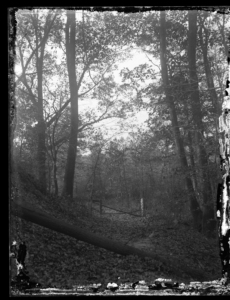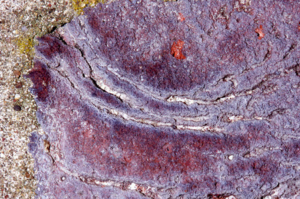
Archaeological studies show that Native Americans began visiting the area now known as the Abbott Marshlands at least 13,000 years ago, not long after the glacier began to recede from northern New Jersey. Initially, people were nomadic, but eventually permanent settlements were established. Early people depended on the area’s readily available resources for food (shad and sturgeon; wild plants), fuel, and other necessities.
The designation of much of the Marshlands and surrounding upland as the Abbott Farm National Historic Landmark by the United States Department of Interior attests to its historical importance. This is the largest Middle Woodland site in the northeast.
The landmark name recognizes the contributions of Charles Conrad Abbott (1843-1919), a noted archaeologist and naturalist, who lived on the bluff near Watson’s Creek. In addition to Abbott, many other archaeologists contributed to understanding the historical significance of the Marsh. One of these was Dorothy Cross, who conducted extensive digs during the 1930s.

Europeans began exploring the Delaware River in the early 1600s. Technology for draining wetlands and an increased dependence on agriculture came with the European settlements. Revolutionary War boats were sunk in Crosswicks Creek to keep them from the British. It was also here that Joseph Bonaparte, brother of Napoleon, lived from 1816-1837.
Unraveling of the cultural history of the Marshlands is ongoing. Dr. Michael Stewart of Temple University and his students are involved in archeological studies here and Dr. Richard Veit of Monmouth University and students have located the site of Joseph Bonaparte’s first mansion at Point Breeze near Bordentown.
Artifacts of the Abbott Farm site can be seen at the New Jersey State Museum.
See the Events Schedule for guided visits to some of the historic sites in the Marshlands.
